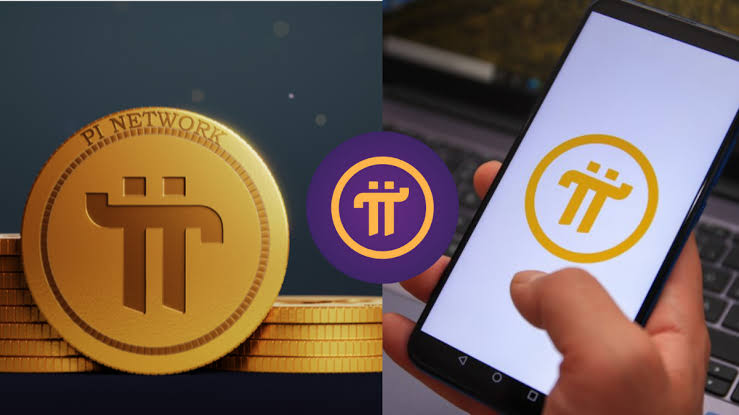As a member of the Pi Network community, you have likely heard discussion around determining a fair value for Pi’s cryptocurrency through achieving global consensus. While an enticing idea in theory that would see all Pi members benefit, you may question whether establishing a universal price agreed by all is truly feasible. In this article, we will analyze the complex factors that drive valuation of cryptocurrencies, examining the market dynamics of supply and demand. By understanding the forces that influence real-world pricing, you can better evaluate if the Pi Network can realistically accomplish its ambitious goal of a globally accepted value via community consensus alone. Although a challenging endeavor, uniting around a common purpose has undeniably been a hallmark of the Pi Network thus far.
Understanding the Debate Around Pi Network’s Global Consensus Value
The Concept of a Global Consensus Value
The idea behind a Global Consensus Value (GCV) for Pi is that if enough of Pi’s user base agrees on a price, it will be accepted by the wider cryptocurrency market. Proponents argue that with Pi’s large, devoted following, it could succeed where other coins have failed.
The Role of Supply and Demand
However, most economists argue that supply and demand, not consensus, ultimately determine an asset’s value. If more investors want to buy Pi than sell it, the price will rise, and vice versa. Pi’s limited supply means that as demand increases over time, prices should trend upward.
The Current State of the Debate
Currently, the GCV continues to be higher than expert estimates of Pi’s value, indicating proponents are unwilling to accept a lower figure. While the Pi Network team has acknowledged the GCV’s popularity on social media, they maintain that the asset’s eventual value will depend on the open market.
What Does This Mean for Pi’s Value?
If demand for Pi coins is high enough on the open market, the value could rise significantly over time, potentially rewarding early pioneers. However, there are no guarantees, and Pi may struggle to attain a high value if it cannot attract enough investors or find real-world utility. The debate around the GCV highlights the desire for Pi to succeed, but the network still faces many challenges in delivering a valuable cryptocurrency.
Factors That Truly Determine Cryptocurrency Value and Price
Supply and Demand
The most significant factors that determine a cryptocurrency’s value are supply and demand. When there are more buyers than sellers, the price goes up. Conversely, when there are more sellers than buyers, the price goes down. Pi Network currently has a large supply of coins but limited ways to use them, so demand remains low. If the project achieves mainstream adoption and more use cases for the pi coin, demand should increase.
Utility and Adoption
A cryptocurrency’s utility and adoption also impact its value. Pi coins currently have limited utility since you can’t use them to purchase goods or services. As more people adopt the Pi Network and pi coins gain mainstream acceptance, their value should rise. Widespread adoption means more trading volume and liquidity, which usually lead to higher market valuations.
Scarcity and Inflation
Some cryptocurrencies like Bitcoin have a fixed supply, so they are scarce assets. Pi Network mints new pi coins through mining, so pi coins are inflationary. While inflation decreases scarcity and can put downward pressure on prices, Pi Network aims to control the rate of inflation to balance supply and demand. If inflation outpaces demand and adoption, pi coin values may fall.
Speculation
Speculation in cryptocurrency markets also influences value and price. When investors believe a coin will rise substantially in value over time, they may buy more of it. This speculation-fueled demand can drive prices up quickly. However, if optimistic sentiment fades, speculative demand and prices may crash. Pi Network will need real-world utility and adoption, not just speculation, to achieve a sustainable, long-term value for the pi coin.
In summary, the factors that truly determine a cryptocurrency’s value and price are complex. For the Pi Network, the key drivers will be mainstream adoption and use cases that increase demand, controlled inflation and scarcity, and limited speculation. If the project can achieve the right balance of these elements, the pi coin may reach its global consensus value.
Can Pi Achieve a Realistic Global Price Consensus?
Pi Network aims to develop a cryptocurrency that achieves mainstream adoption. For this vision to become reality, Pi must establish a realistic value in the global marketplace. Some Pi enthusiasts propose determining a “global consensus value” (GCV) through community voting. However, most economists argue that market forces of supply and demand, not votes, determine an asset’s value.
Supply and Demand Dynamics
The principles of supply and demand suggest Pi’s value will depend on the equilibrium between how many Pi pioneers want to buy or sell their coins. When more pioneers seek to buy Pi than sell it, the price should rise. Conversely, when more pioneers sell than buy, the price should fall. The limited supply of Pi coins also impacts their value. As demand for Pi grows over time but the supply remains fixed, economic theory predicts the price will increase.
Challenges in Determining a GCV
Proponents argue a GCV could make Pi’s value “fair” and build community. However, several issues complicate determining a GCV. First, pioneers likely have diverse, subjective views on a “fair” price. A vote may not reconcile these differences. Second, pioneers could vote strategically to manipulate the GCV to their advantage. Finally, an artificial GCV risks disconnecting Pi’s value from real-world market forces. If the GCV does not match what the market will actually bear, it could hamper Pi’s mainstream potential.
A Market-Driven Path Forward
Rather than determining a GCV, the Pi Core Team should focus on building a useful product, growing the network, and facilitating an open market where pioneers can exchange Pi. As the utility and adoption of Pi increases over time, an equilibrium price should emerge based on the real interactions between buyers and sellers. While community building is important, a GCV risks centralizing control over Pi’s value in a way that could negatively impact its mainstream adoption. By taking a market-driven approach, the Pi Core Team can empower pioneers to determine Pi’s value through their own free exchange. This path aligns with Pi’s decentralized vision and offers the greatest chance for long term success.
Conclusion
While the debate continues between supporters of a Global Consensus Value (GCV) and experts who cite economic principles of supply and demand, the popularity of the GCV persists. Despite reasoned arguments about factors that truly drive prices, GCV proponents cling to the democratic ideals of collectively determining value. While the Pi Network core team may not have intended a GCV, its emergence on social media compels acknowledgment. For now, pioneers’ optimism lifts the imagined GCV higher, envisioning wealth from this untested model. Yet realistic valuations wait for the launch, when supply and demand economics make themselves felt. The GCV’s durability will then face its biggest test. Read Similar Story

















I am sending you 1π! Pi is a new digital currency developed by Stanford PhDs, with over 55 million members worldwide. To claim your Pi, follow this link https://minepi.com/dreamtreats and
use my username (dreamtreats) as your invitation code.
I am sending you 1π! Pi is a new digital currency developed by Stanford PhDs, with over 55 million members worldwide. To claim your Pi, follow this link https://minepi.com/daiv101 and use my username (daiv101) as your invitation code.
“🌐ATHENE NETWORK🌐 📱 Download ATHENE NETWORK App
https://play.google.com/store/apps/details?id=network.athene.app 📱 💰 EARN FASTER 💰 🎉 EXTRA REWARDS: USDT; LION; GEM 🎉 🎁 Claim Daily Rewards: Free $ATH tokens 🎁 🔐 STAKING 🔐 🔖 Referral Code: b1c56e701883
Satoshi – Global Free Airdrop
Satoshi is the world’s top one free airdrop platform,we will have various outstanding projects and tens of million crypto world residents.
https://www.btcs.love/invite/6yygn
#OpenEx #Wallet #OEX #Satoshi
OpenEx OEX Wallet
https://oex.to/d/1YtksPn
Mine Pi for free on your phone!
I am sending you 1π! To claim your Pi, follow link https://minepi.com/yajer72 use (yajer72), your invitation code.
#Athene #Network #ATH #Pi #PiNetwok #OpenEx #OEX
Good news Athene Network launched offical P2P trading Wesbite
Now you buy Sell … Ath Gem Pi on this Trading Site
Register your account link 👇
https://p2p.athene.network/register?invite_token=Pjl7JziaN6
already registered on Athene network
Update your Athene Network profile
👉use this code invite: 61b3fbe999